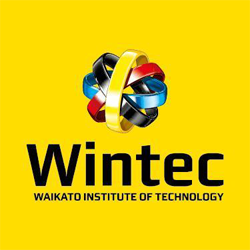
Discipline Specific e-Training for Trades Tutors: Integrating Theory with Practice Using e-Technology
Status
Completed: 19 December 2012
Project Details
A project, completed in 2012, to develop a discipline specific e-training model that can be applied to any trades discipline. A collaboration of Waikato Institute of Technology and the Hairdressing Industry Training Organisation.
Aims:
The main aims of the project were to:
- improve teaching – by the sharing of skills that enable technology to be used to appeal to all learning styles
- increase learner engagement – by introducing a broader variety of learning mediums while sharing proven teaching and learning strategies
- expand resources – by developing practical e-learning tools that can be used to engage students in learning
- initiate and facilitate an on-going Community of Practice – by encouraging the participants from each occurrence of this programme to join the e-learning community of practice for hairdressing educators on the Ako Aotearoa website.
Methodology:
The project used a mixed method approach involving:
- a review of the literature on blended learning environments
- a pilot training programme, which was held over a six-week period involving five weeks of online tasks and one face-to-face session, focused on relating theory to practice through the use of problem-based case studies, discussions and quizzes, all in an online environment
- online participant questionnaires were used during the face-to-face day and after-programme completion surveys were completed via email
- students of those tutors who subsequently introduced e-learning programmes were surveyed through a questionnaire administered by their tutors six months after completion of the pilot programme.
Team

Julia Bruce
Project Leader
Waikato Institute of Technology (Wintec)
Colin Sutherland
Waikato Institute of Technology
Jason Hare
Hairdressing Industry Training Organisation (HITO)
Cheryl Belcher
Waikato Institute of Technology
Evelyn McKnight
Waikato Institute of Technology
Dr John Clayton
Waikato Institute of TechnologyStatus
Funding
$6,325.00 (excl GST)
Key Findings
The key findings from the project included:
- The outcomes of the Theory to Practice project show that the pilot training programme was effective in empowering hairdressing tutors, in the sense that they subsequently felt positive about using a range of technologies to facilitate learning.
- Comments from the initial pilot programme participant evaluations and remarks posted on the discussion boards indicated that all participants surveyed found the programme to be a rewarding experience. All participants surveyed used the internet regularly, but few had any experience facilitating online learning. Only one had experienced being an online learner prior to participating in the programme and one had facilitated online learning.
- The project identified from participant feedback, outcomes and the literature review that other considerations need to be taken into account, in order for participants to actually develop e-learning programmes within their organisation. These include: organisational commitment including staff release, PD /technical training and course development time; technical resourcing and on-going technical support; commitment to building student capability; and discipline specific development.
- The Theory to Practice project developed an effective Discipline Specific e-Training Model for trades tutors that can be led by a trades tutor (for training other trades tutors). This was achieved by implementing a pilot training programme for hairdressing tutors that was developed and led by a hairdressing tutor who has received national recognition for her e-learning practice.
- Student feedback from three different hairdressing programmes that included e-technologies integrated by Theory to Practice participants showed that initially these students used technology in class with the support of tutors, Learning Technologists and IT staff. Tutors helped students to set goals, in order to build autonomous learning skills. Students interacted with both their tutors and peers as part of the e-learning environments, extending the relationships that were built in the classrooms. As these were lower level programmes (Levels 1-4), students were generally working in Level 1 of the staged Student Capability Model that was developed from the literature review.
Key Recommendations
The key recommendations from the Theory to Practice project were:
Wider use of the Discipline Specific e-Training Model | To make the Theory to Practice training model work for a specific discipline, it is essential to select a teacher from the same field of practice who has facilitated learning using e-technology. This teacher would facilitate the training using the Discipline Specific e-Training Model for teachers of the same discipline across the region or country. It would be of great value to see this model in use. Teaching staff working together across organisations to develop e-learning components have the potential to enrich learning environments for students, save development time for tutors and provide numerous positive outcomes for organisations.
Staff development opportunities | Staff development opportunities for trades and vocational tutors should be set up for discipline-specific groups. This model is designed to increase tutor capability to help students integrate theory with practice, improve teaching practice, develop usable resources and increase learner engagement. It would be useful to apply the Discipline Specific e-Training Model to a trades discipline other than hairdressing, and research the results.
Discipline Specific Training research | Staff should be allowed time-release or use professional development leave to participate in on-going communities of practice. It would be useful to research this as a component of the on-going Discipline Specific Training inquiry.
Providing robust technologies and on-going support | Organisations must provide robust technologies and on-going support if e-learning is going to be integrated into blended learning programmes. This could be an additional component of the Discipline Specific Training inquiry.
Incorporating kaupapa Māori principles | Student capability must be considered as part of an over-arching blended learning strategy when integrating e-learning practices. A staged approach to developing independent learning skills and incorporating kaupapa Māori principles is recommended. During the pilot programme, there was an absence of Māori pedagogy in the resources and activities that the participants developed. It would be useful to develop and research programmes that incorporate the Student Capability Model, to develop transferrable learning skills and include Māori pedagogy in the learning environment.
Survey Theory to Practice participants | Students of the Theory to Practice participants who have set up and facilitated e-learning components within their programmes up to a year after the completion of the pilot programme should be surveyed to ascertain their degree of achievement in terms of learning outcomes.
A research report prepared by Julia Bruce.
(PDF, 822KB, 27-pages).
- 19 December 2012